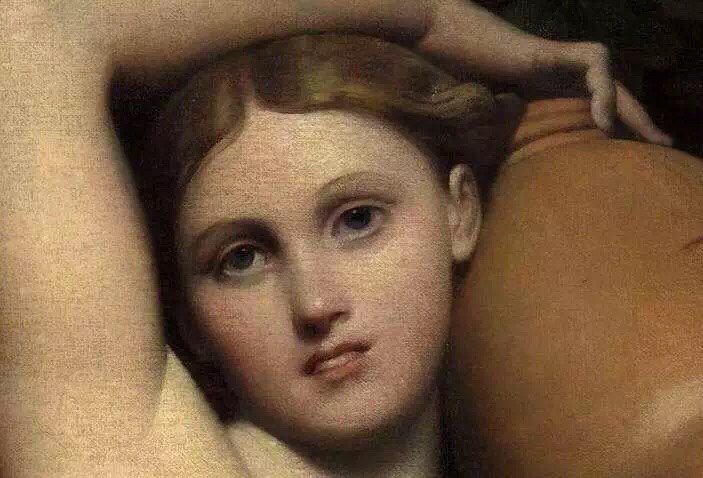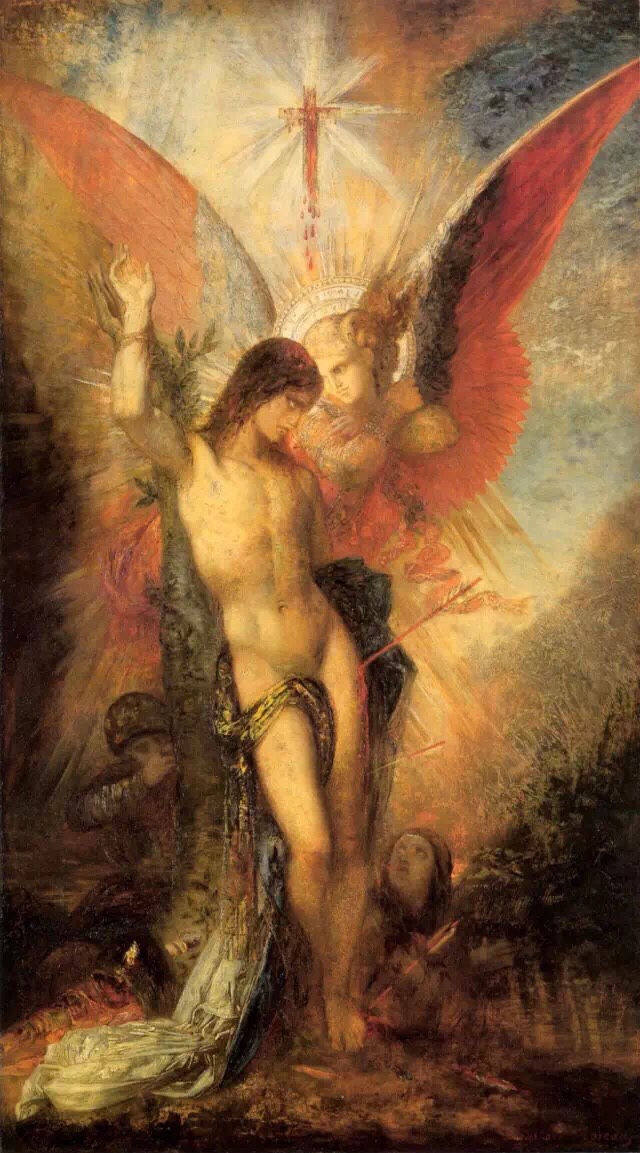
I prefer artists who don’t belong to any genre, Morandi, Giacometti, San Yu.
Gustave Moreau is also considered one of them

Gustave Moreau likes to paint the enchantress.
The word enchantress was born in the French word “Femme Fatale”, which is used to describe a woman who is beautiful and charming ,but will bring disaster to men.
Salome is one of the most famous.

Salome was originally a princess with have no name in the Bible.
In the Gospel of Matthew, Herod smashed his brother, Helotti, and John the Baptist publicly condemned this unethical act.
Heroetti was particularly angry and resentful. One day, at Herod’s birthday party, Heroetti asked her daughter, Salome to dance for Herod.

The girl is so beautiful. Herod was very happy, and he promised that he would satisfy any of Salome’s wishes, even if she wanted half of the country.
But under the instruction of the mother, Salome wanted Herod to put John the Baptist’s head on the plate, and Herod was very remorse, but could only order John to beheaded.

In the picture, Salome ‘s jewellery is entangled in the neck, arms and waist, which is more like an ideal model for women in Indian religion.
In the same period that Gustave Moreau and Impressionism belonged, Europe in that period was being swept by the aesthetics of the East. Unlike Impressionism, which studied a lot of ukiyo-e paintings, Moreau ‘s Orientalism was more inclined to India.

The girl in the painting is wearing a tulle jewel, John’s head is shackled, blood is dripping on the head of the light, and the body is beautiful.
This dangerous beauty has become the motif of literary history.

Titian “Salome accepts the head of St. John the Baptist”

Lenny “Salome”
Moreau may be a niche, but his work has somewhat changed the role of women in art history.

Before Moreau,women in art history were pure, brilliant, and the embodiment of beauty.
This may be okay, but They can’t escape the fate of just being appreciated.

They are like flowers ,only being watched

Or like object ,being judged .

Or to be described as fragile ,to make man more powerful .
But from Moreau the cognition of women in art history has become complicated.
They also have fangs and claws that can be aggressive. Under their beautiful face, they are no longer pure, but reveal cold and grim, sin, fate and death.

In the textbook, it was described in the late 19th century, which was the theme of Moro.
“That was the most turbulent era in European history. The materialism is supreme, and the concept of profit-seeking is arrogant. Women are beginning to fall, so they begin to show the evil side in art history.”


I don’t think so.
This may be the beginning of a woman’s transition from an object to a subject. From this moment on, they can begin to choose their own destiny.

In Wilde’s adaptation of Salome, Wilde is full of praise for Salome, who is no longer a girl who is ignorant and ignorant by her mother.
She said that she would kneel down on John’s head because she fell in love with John but could not get a response. She just wanted to kiss his lips.
She jumped in the “seven-velocity dance” in public, and she took off a layer of yarn for each hop. It is said that God has seven layers of yarn, and the last veil is opened, and the truth appears.

Jung once said that every man has a dream female image in his heart. This image is called “Anima”.
In the hearts of different people, Anima may be good or evil.

The world’s women are just two of them.
The good-natured Anima will lead men to rise and to paradise , and the evil Anima will lead men to destroy.

And Salome is the embodiment of all the evil Anima in this world. She is like a sea monster in ancient Greek mythology, leading to a sweet death.
“It is her nature, her innocence that makes people respect women, or often makes the world afraid of women.”
By the way , anyone who get the chance to visit Paris could also drop by the musée national Gustave Moreau,its at 14 Rue de la Rochefoucauld, Paris,and one of the very special museum I’ve ever visited in Paris










Gorefully Glorious!
LikeLiked by 1 person
Thank you ^^
LikeLike
Lovely master piece
LikeLike
Thank you Ella Chan :3
LikeLike
Who said the last sentence in your article ?
LikeLiked by 1 person
From Nietzsche 😉
LikeLike
A beautifully written essay on the subject of Salome in art. 💕
LikeLiked by 1 person
Thank you ^^
LikeLiked by 1 person
Reblogged this on Dracul Van Helsing and commented:
An excellent blog post written by Miyako Yunagi on how Salome the original femme fatale of New Testament biblical history has inspired great works of art throughout the ages:
LikeLiked by 1 person
Haha thank you ^^i feel more motivated now :3
LikeLiked by 1 person
A well-written and well-researched article. Loved it.
LikeLiked by 1 person
Yea, amazing how women have been depicted. I did a similar blog post a few months ago with different examples.
LikeLiked by 1 person
That’s cool,can you give me the link ?
LikeLike
Well done. I see you have visited Moreau’s museum.
I wanted to go back last summer, but time eluded me. Next year, then.
🙂
Au revoir.
LikeLike
Visiting la musée national Gustave Moreau during my last trip to Paris was one of the most exciting days of my life, I love his work. Thank you for this insightful little essay!
LikeLiked by 1 person
Haha really I loved his museum too :-)Thank you for your time reading it:-)
LikeLiked by 1 person
I like these paintings
LikeLiked by 1 person
Slightly different, but do you like Vania Zouravliov? A master illustrator.
LikeLike